As parents, sometimes it is difficult to know when your child is struggling behaviorally- you may ask yourself, is my child’s behavior typical or is there an underlying issue? Although there may be times when we feel like our child’s behaviors have no rhyme or reason, all behaviors have a motive. To really understand a child’s behavior and to encourage positive behaviors, parents must first understand the four functions of behavior. The function of behavior is what motivates someone’s behavior. Fortunately, here at Behaved Brains there are several clinicians with extensive experience working with children and families who are struggling with reinforcing appropriate, desired behavior. Below you will read about the 4 different functions of behavior, what each of those behaviors look like and the possible motivates for each behavior.
- Attention
When your child engages in unwanted behavior, are they doing it with the purpose to get attention from you or another individual? Attention-seeking behavior often occurs when the child wants a specific response from a specific person or group of people. It is important to recognize that children want attention and will settle from any kind, whether it is positive or negative. Some examples of attention seeking behaviors include excessive crying, tantrums that are often out of proportion to the event, inappropriately engaging in a task on purpose, damaging property, or engaging in risky behavior that puts them in danger. A helpful way to deal with this behavior is to ignore it. Without the attention, the child will eventually get tired of engaging in the behavior because they are no longer getting the desired response. The only reason you would not ignore attention seeking behavior is when the child’s safety is concerned.
- Escape
When your child engages in unwanted behavior, are they doing it with the purpose to avoid or “escape” doing something undesirable? This type of behavior often occurs when a child wants to avoid a task. If your child elopes you may feel like you are on a wild goose chase trying to contain your child. Sometimes it is difficult to pinpoint why your child may be engaging in escape behavior- most of the time the child may be lacking the motivation to do said task or the task may be too difficult to complete. A helpful way to deal with this behavior is to provide frequent breaks as well as breaking a task down into smaller, more manageable parts. This may help alleviate stress and provide the child with small opportunities for success.
- Access (to tangibles)
When your child engages in unwanted behaviors, are they doing it with the purpose to gain access to something? When trying to access a tangible item, a child may beg, scream/cry, throw a tantrum, hit, bite, etc. A helpful way to deal with this behavior, depending on if the item can be considered dangerous, is to use a reward system. When the child engages in the desired behavior, they will receive a reward and the reward can be access to the tangible item. This helps the child stay motivated throughout the task and creates a balance between work and play. It also helps with consistency and compliance as the child knows they will receive the reward after they complete the desired task.
- Sensory Stimulation
When your child engages in unwanted behaviors, are they doing it with the purpose to experience a desired sensation or to replace discomfort? This type of behavior often occurs when a child is seeking sensory stimulation (also known as sensory needs). For some children the need for sensory input is important and effective in engaging in desired behavior. There are several types of sensory-based interventions that are effective depending on the specific sensory need. Many interventions include using equipment such as weighted vests, applying pressure or squeezes, swinging or rocking. Designating time throughout the day for sensory input can help with self management skills.
Whether you have an idea or are unsure of what motivates your child’s behaviors, there are tools to help identify which function a child is engaging in. A first step in identifying your child’s function of behavior, is documenting specific incidents of behavior by using something called an ABC data sheet. An ABC data sheet helps identify patterns in behavior by documenting the antecedent; what was happening right before the behavior, the behavior; details about what the behavior looked like (ie: crying/hitting), and the consequence; what happened directly after the behavior occurred. When documenting incidents of behavior, it can help pinpoint whether the behavior happens during a specific time of day, completing a specific task, engaging with a specific person or any other relevant patterns. It is essential to be as detailed as possible when documenting a behavior. Below is an example of a ABC Data sheet:








